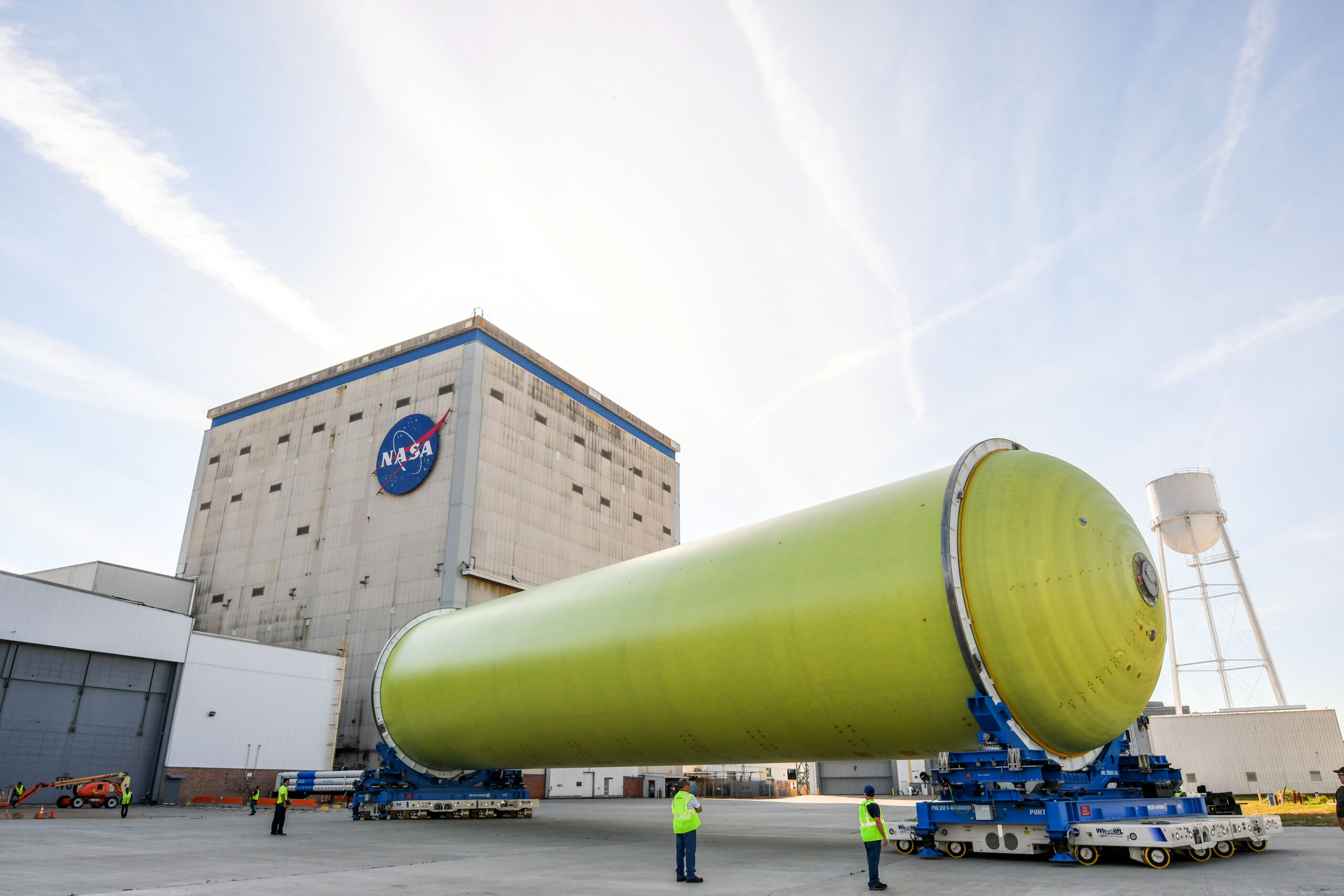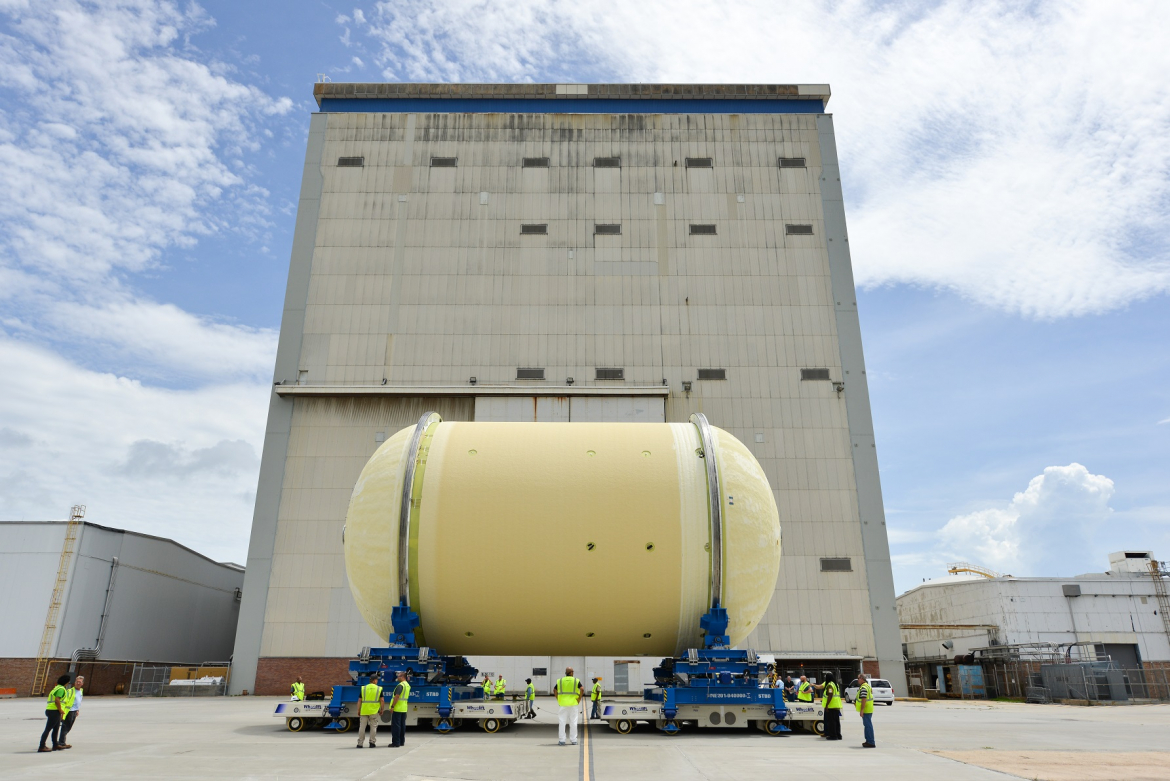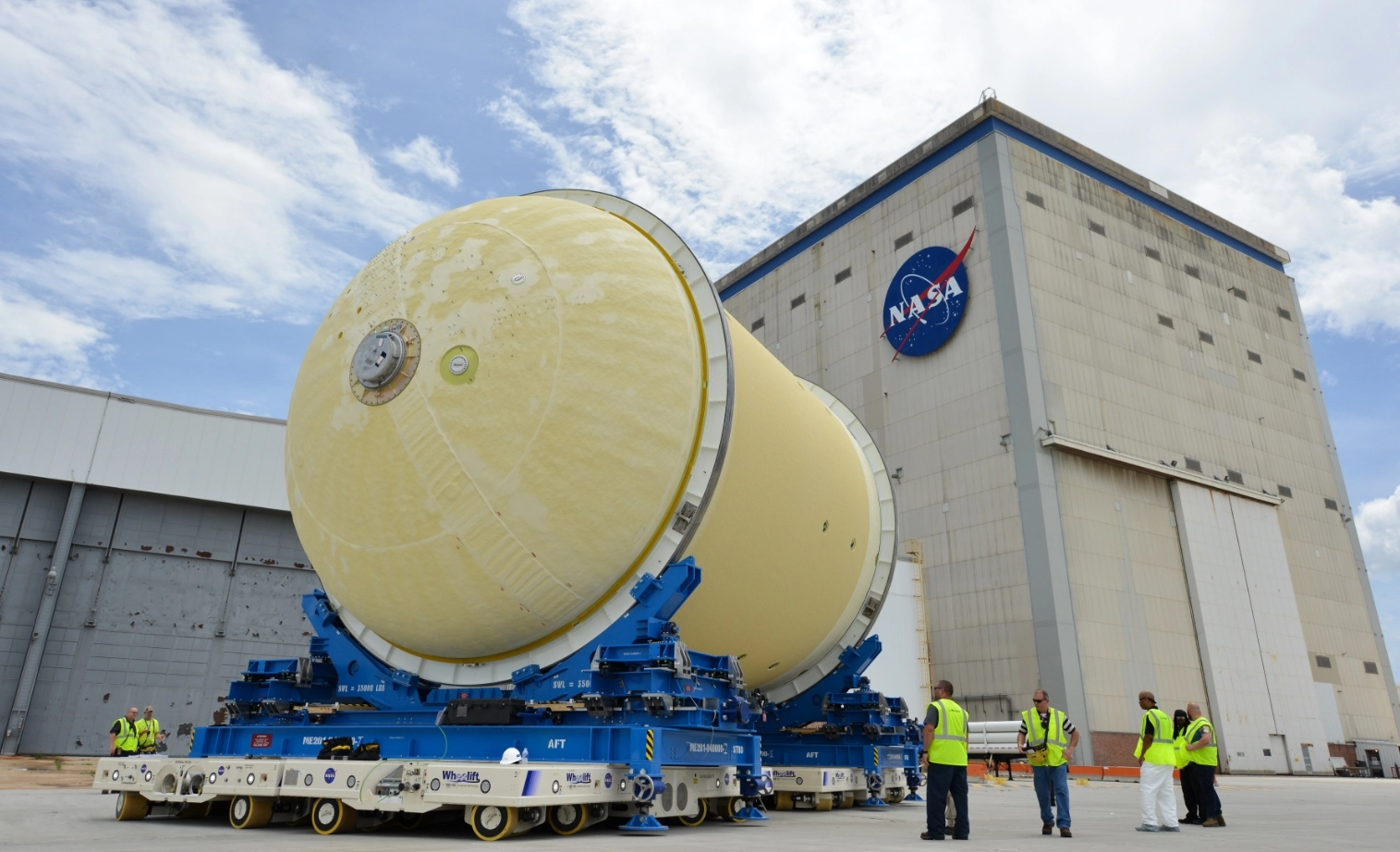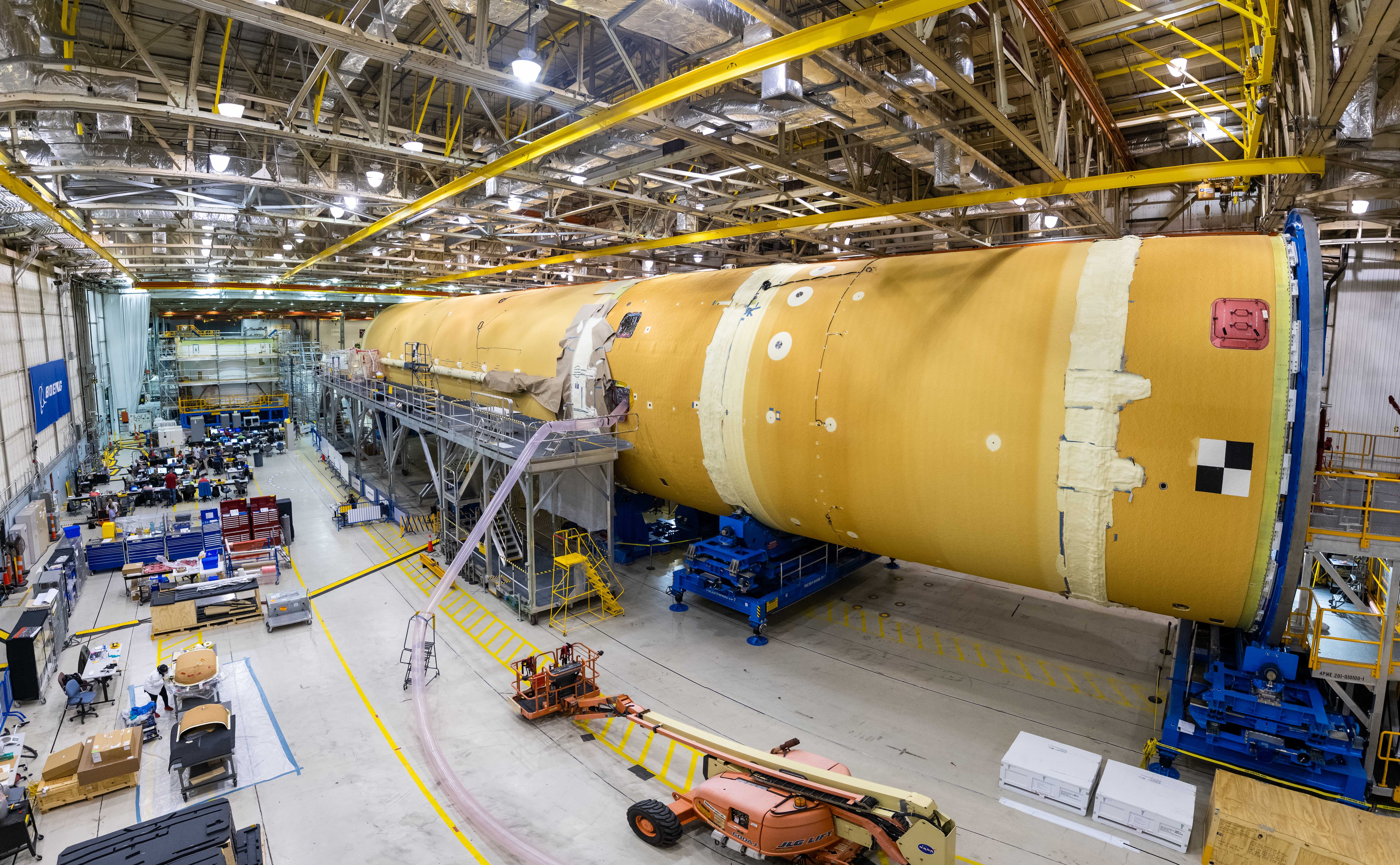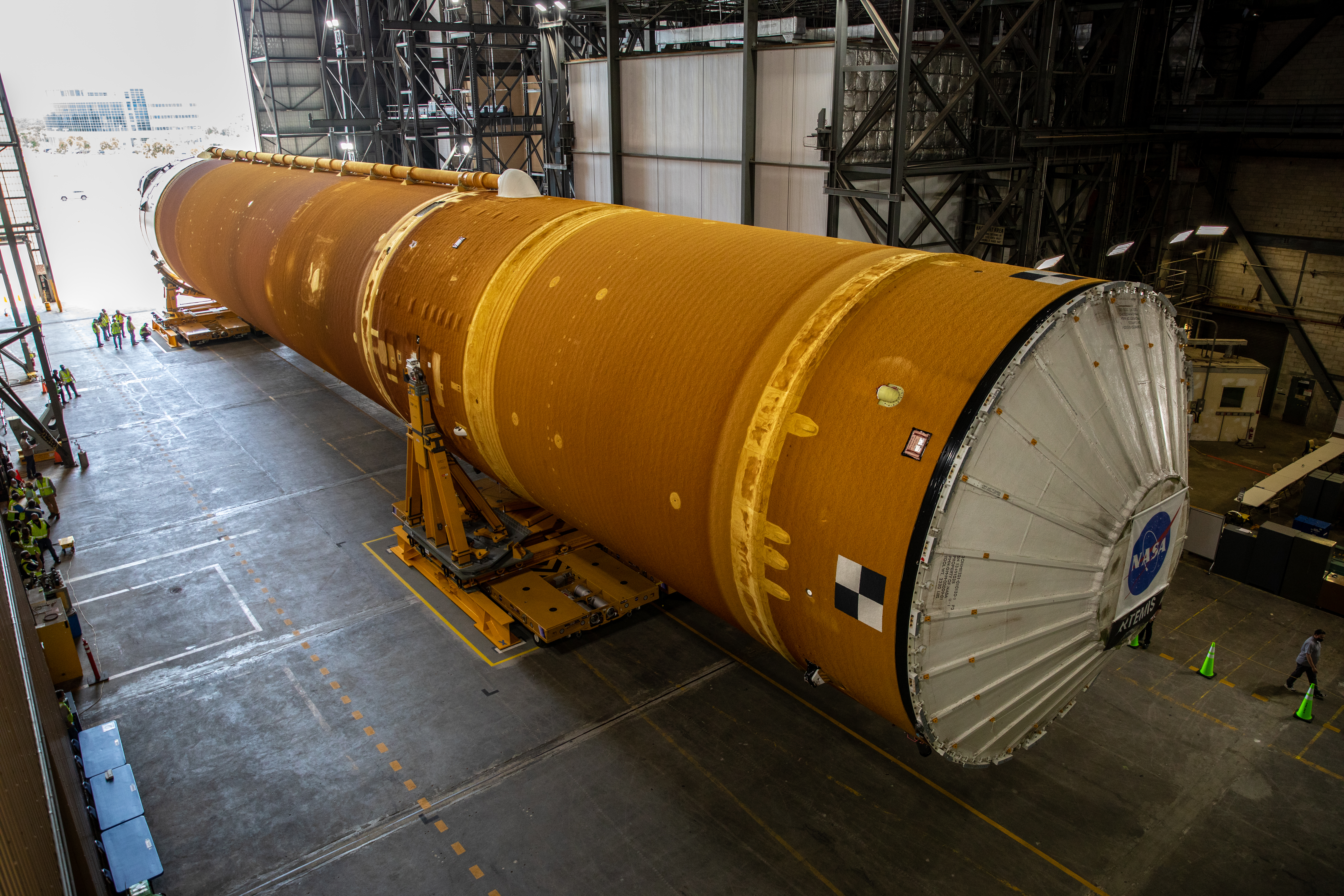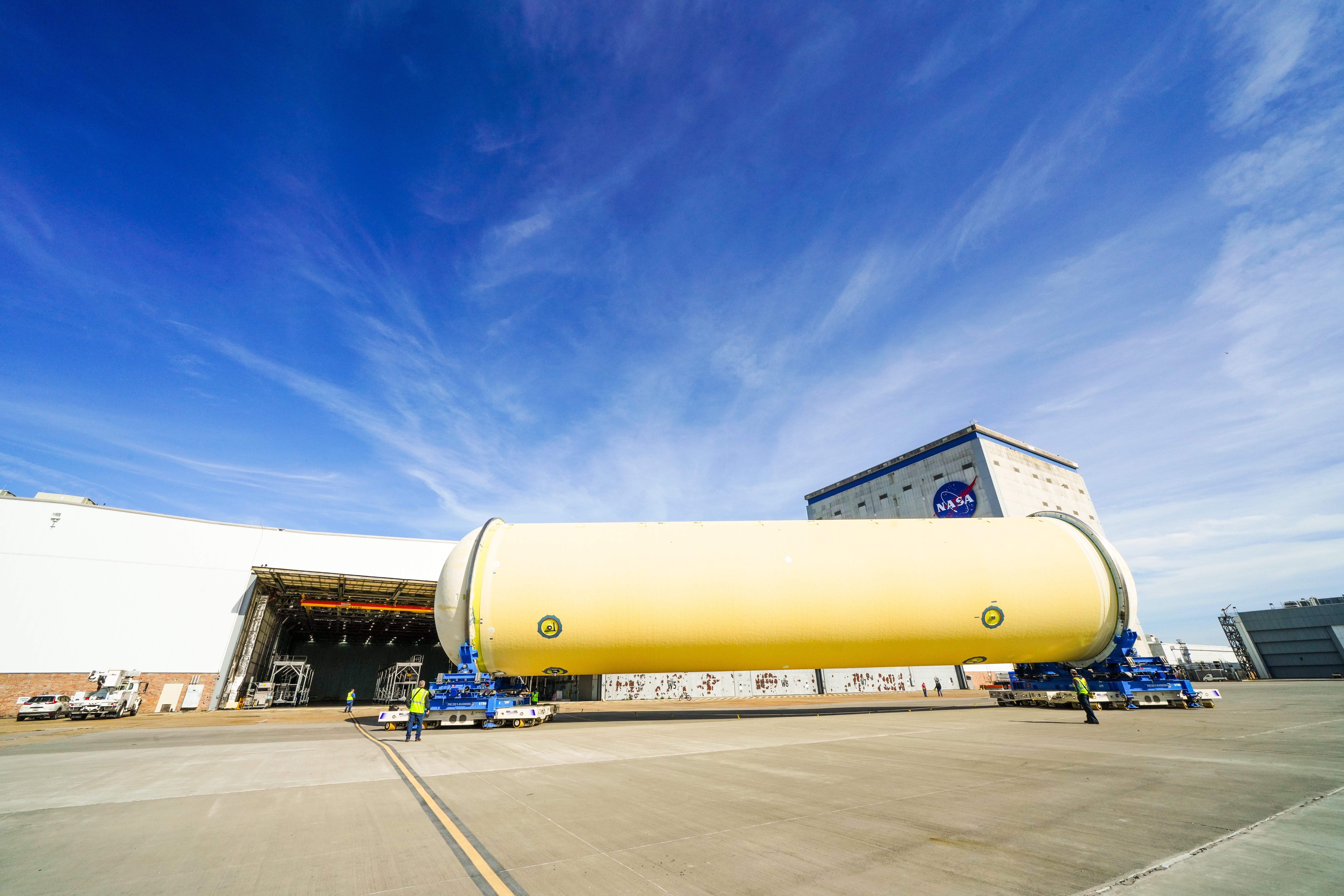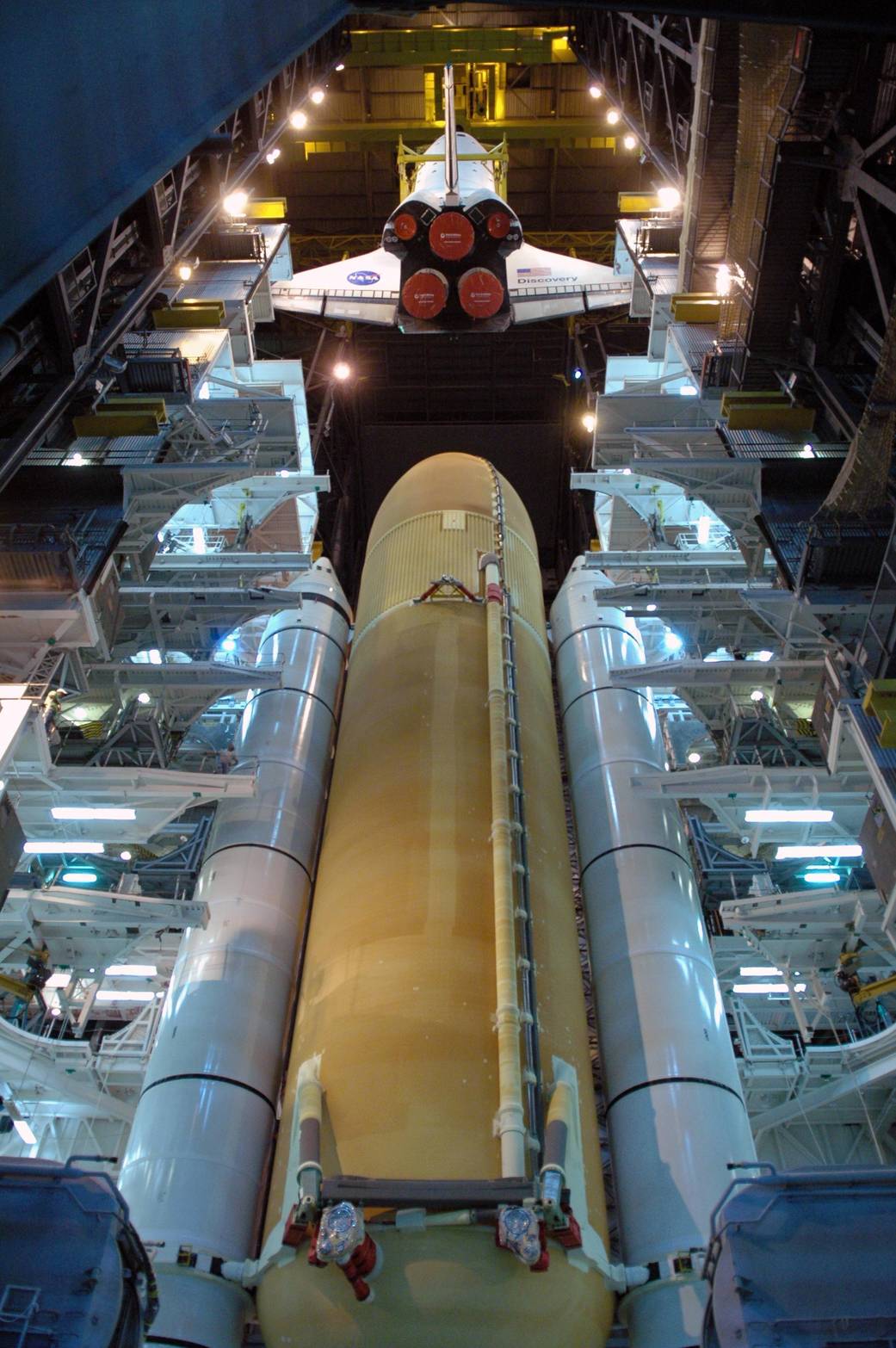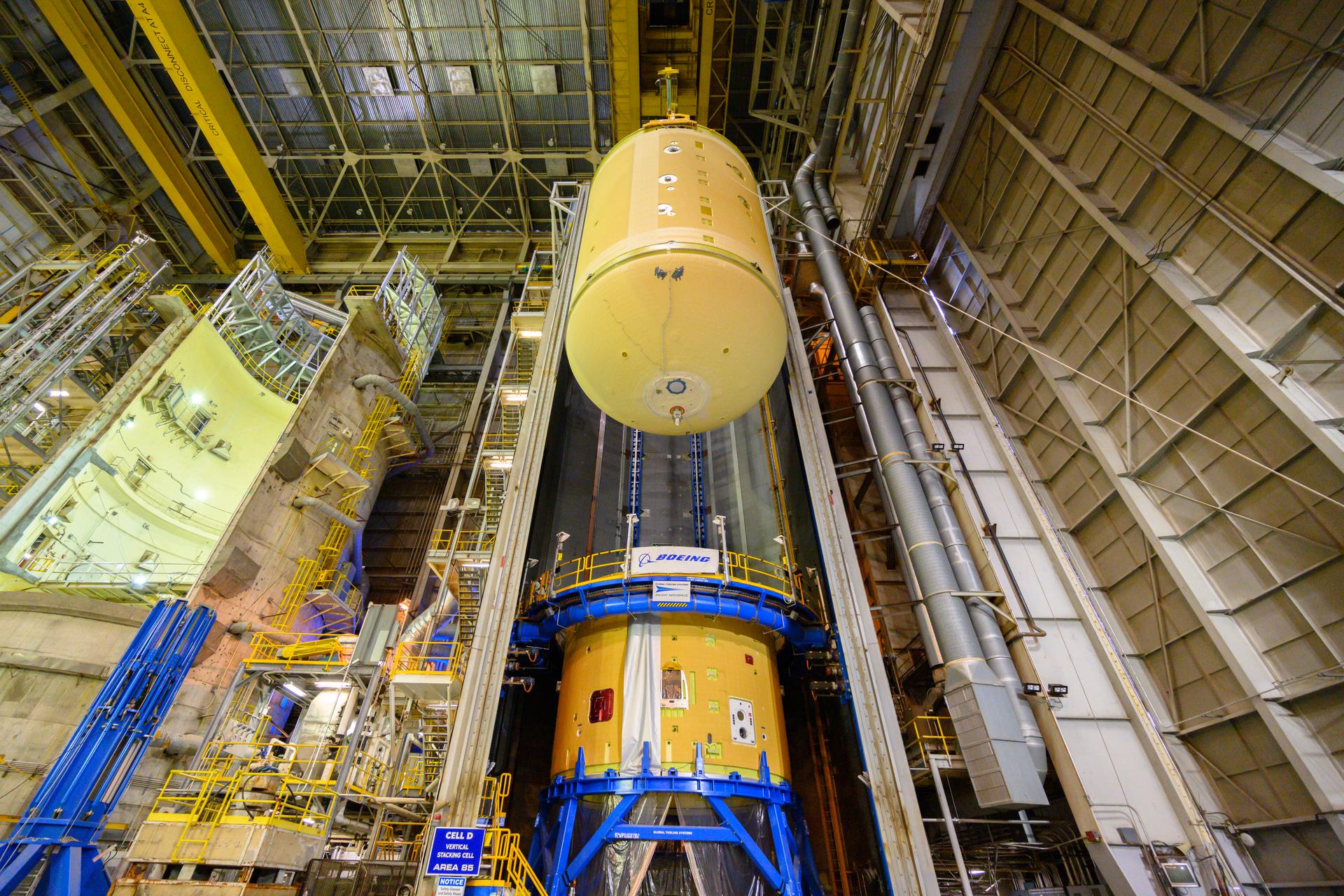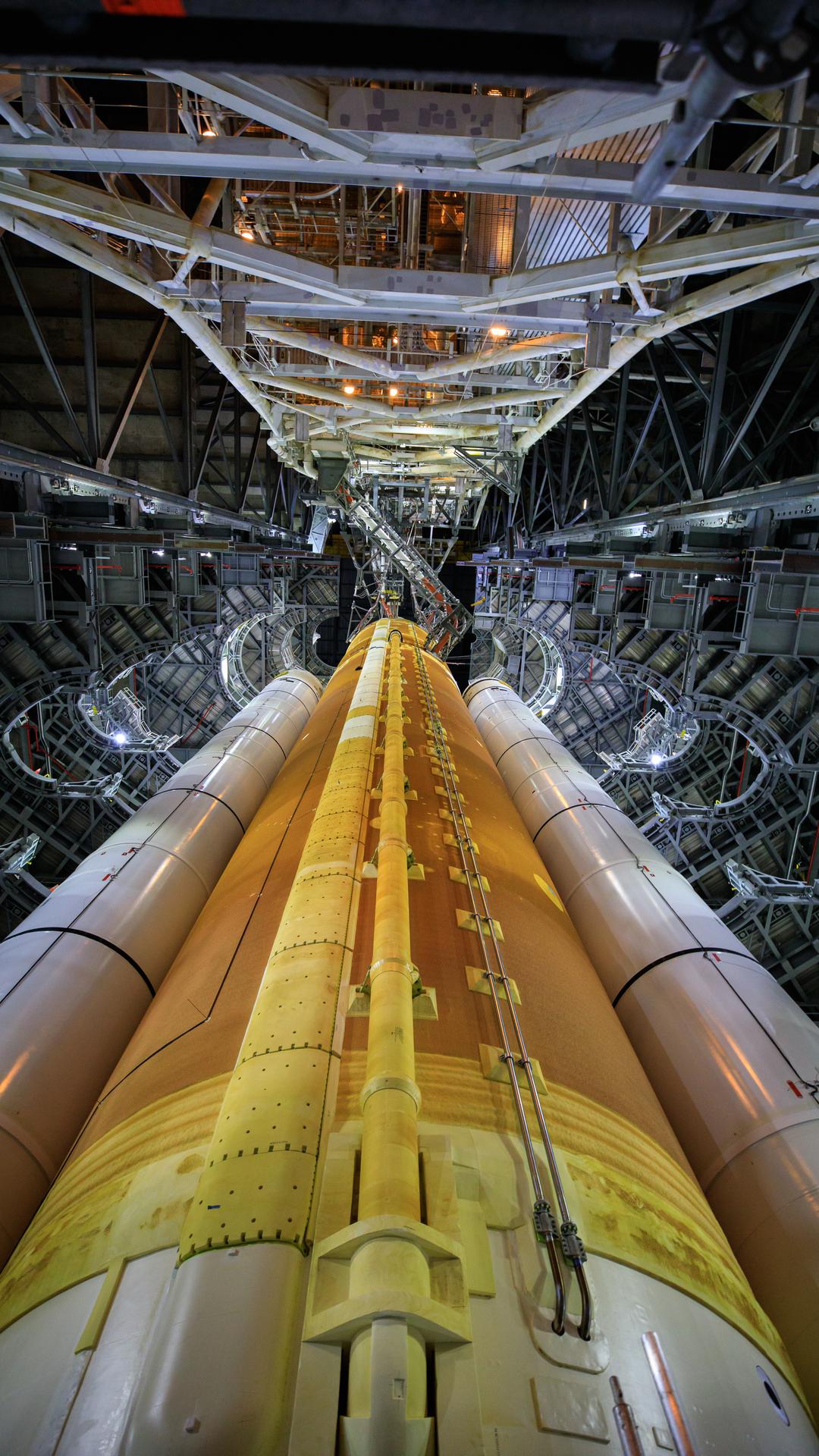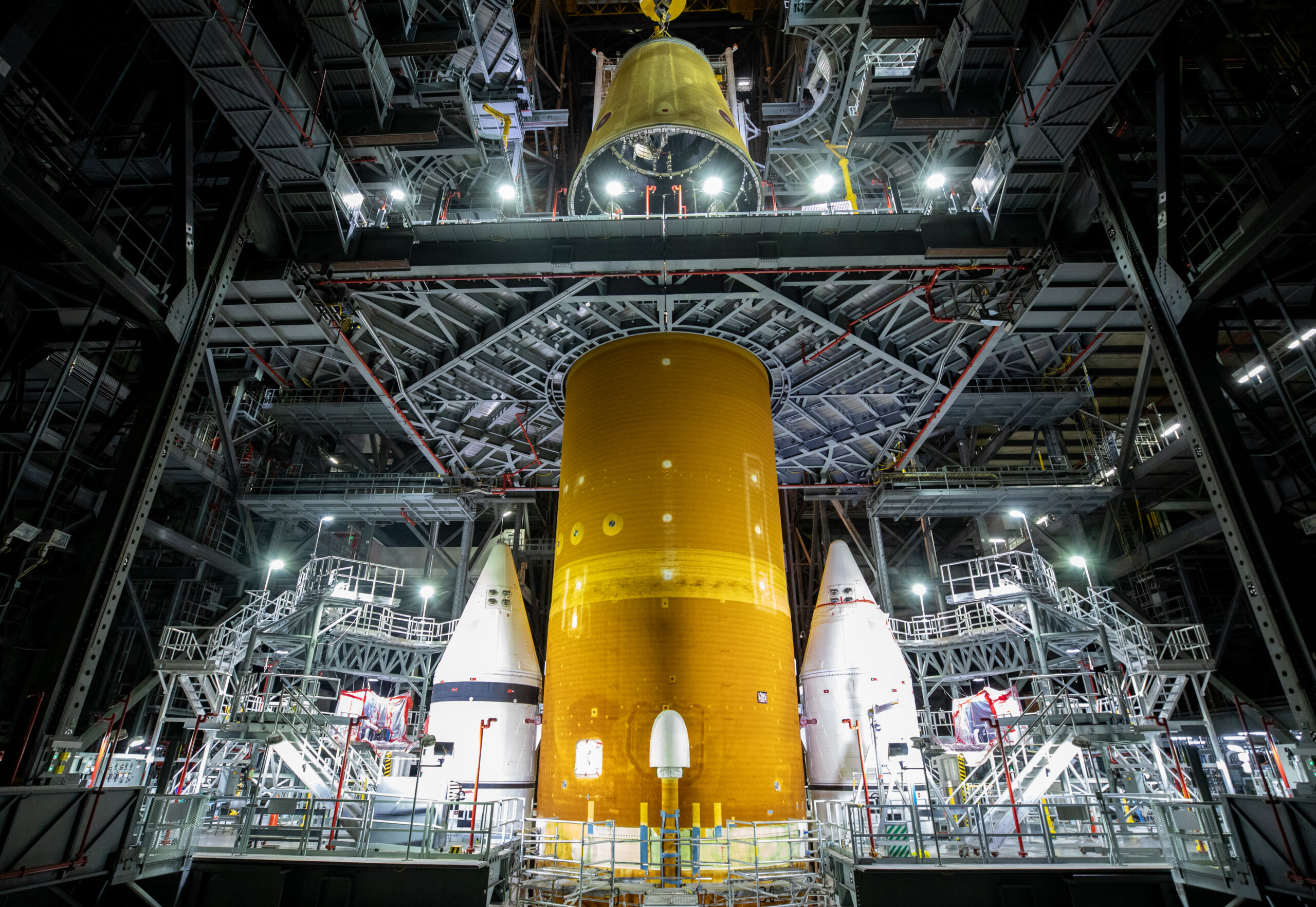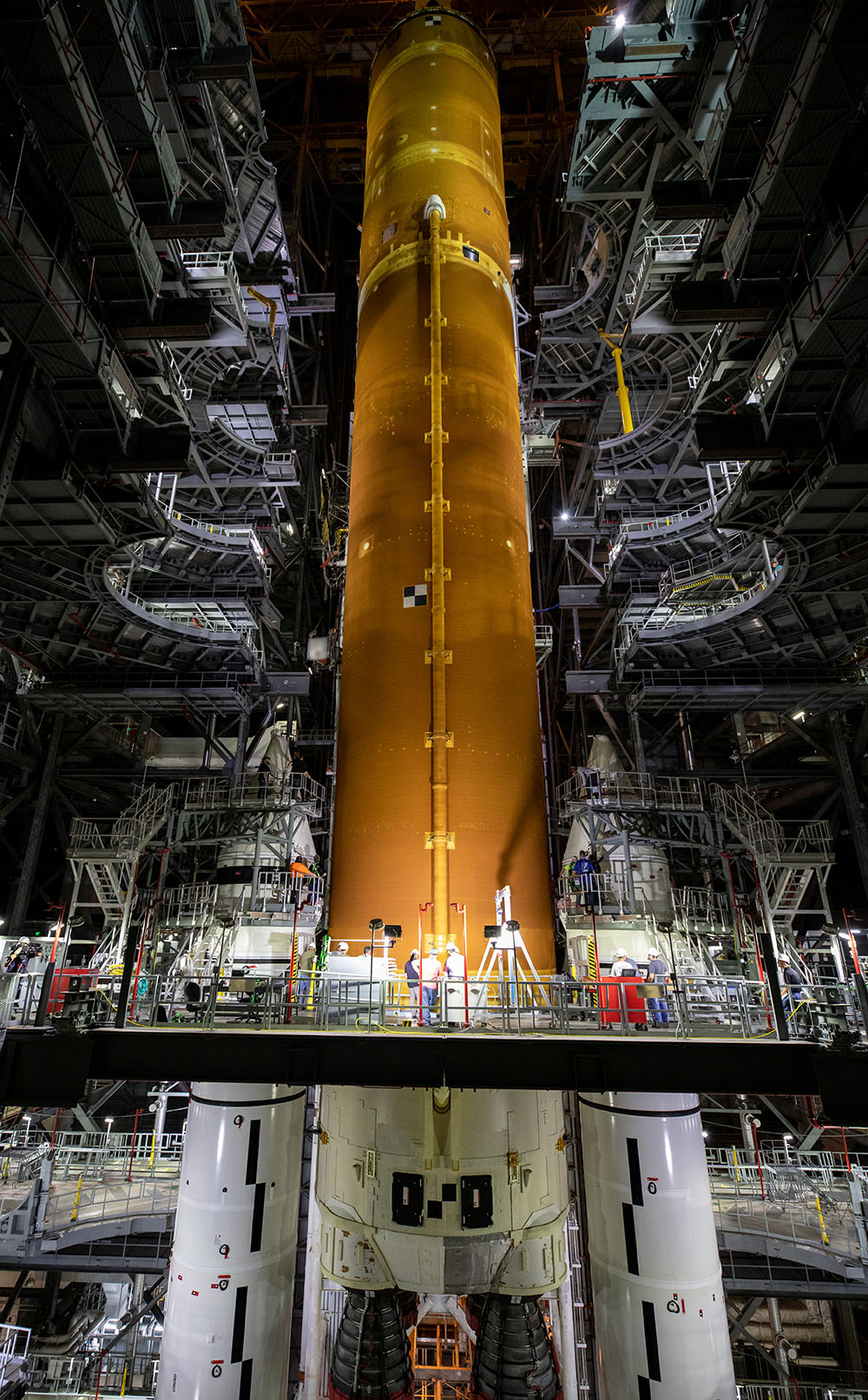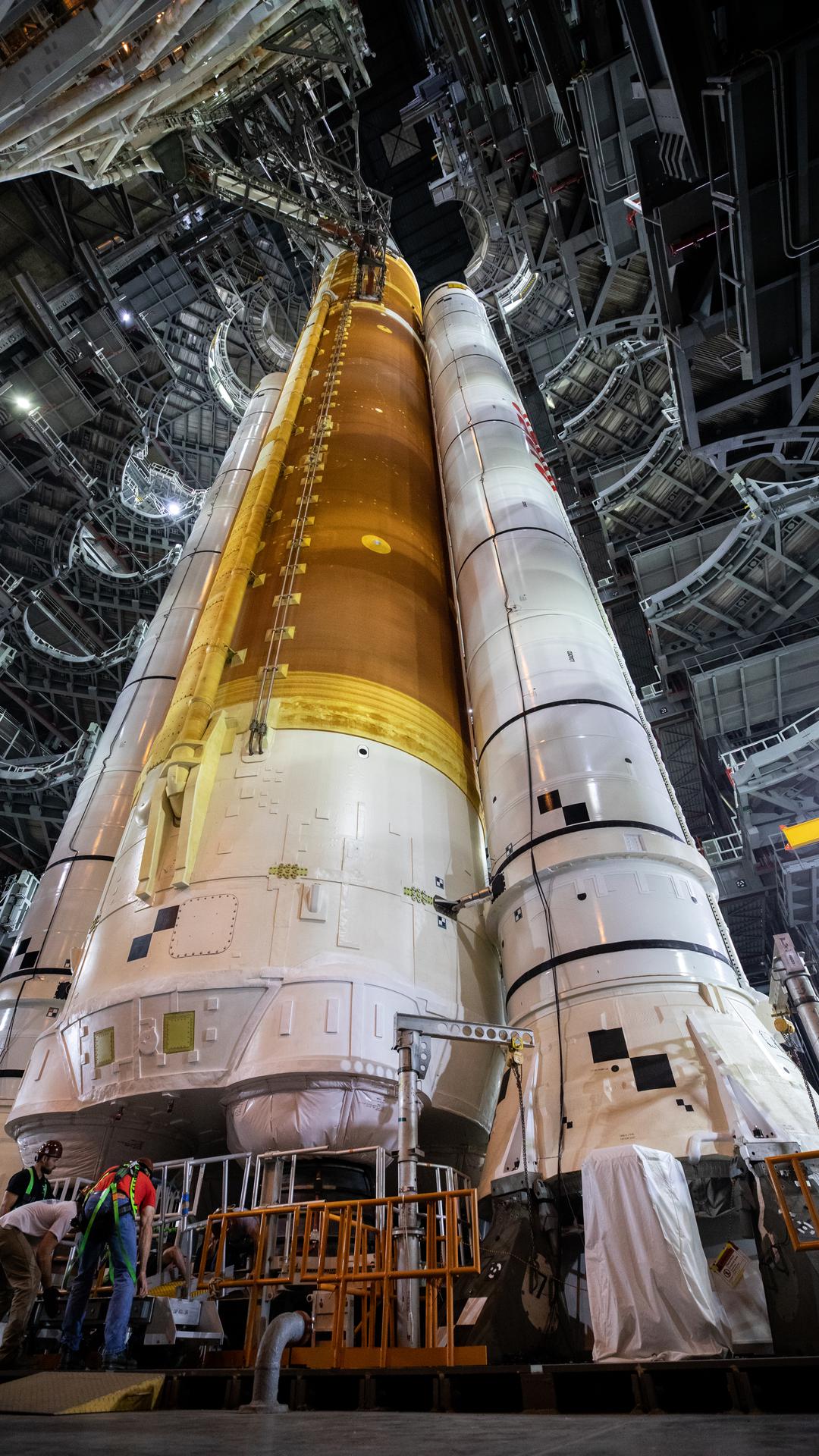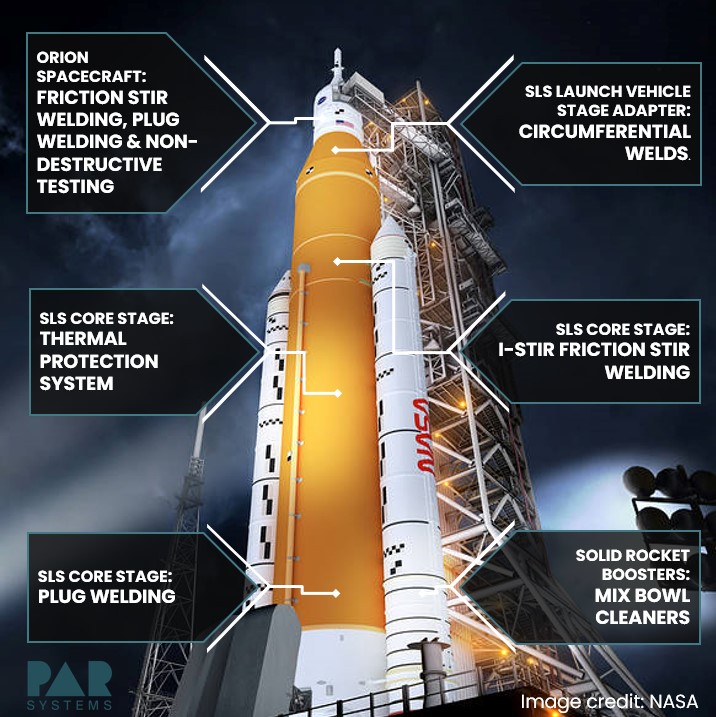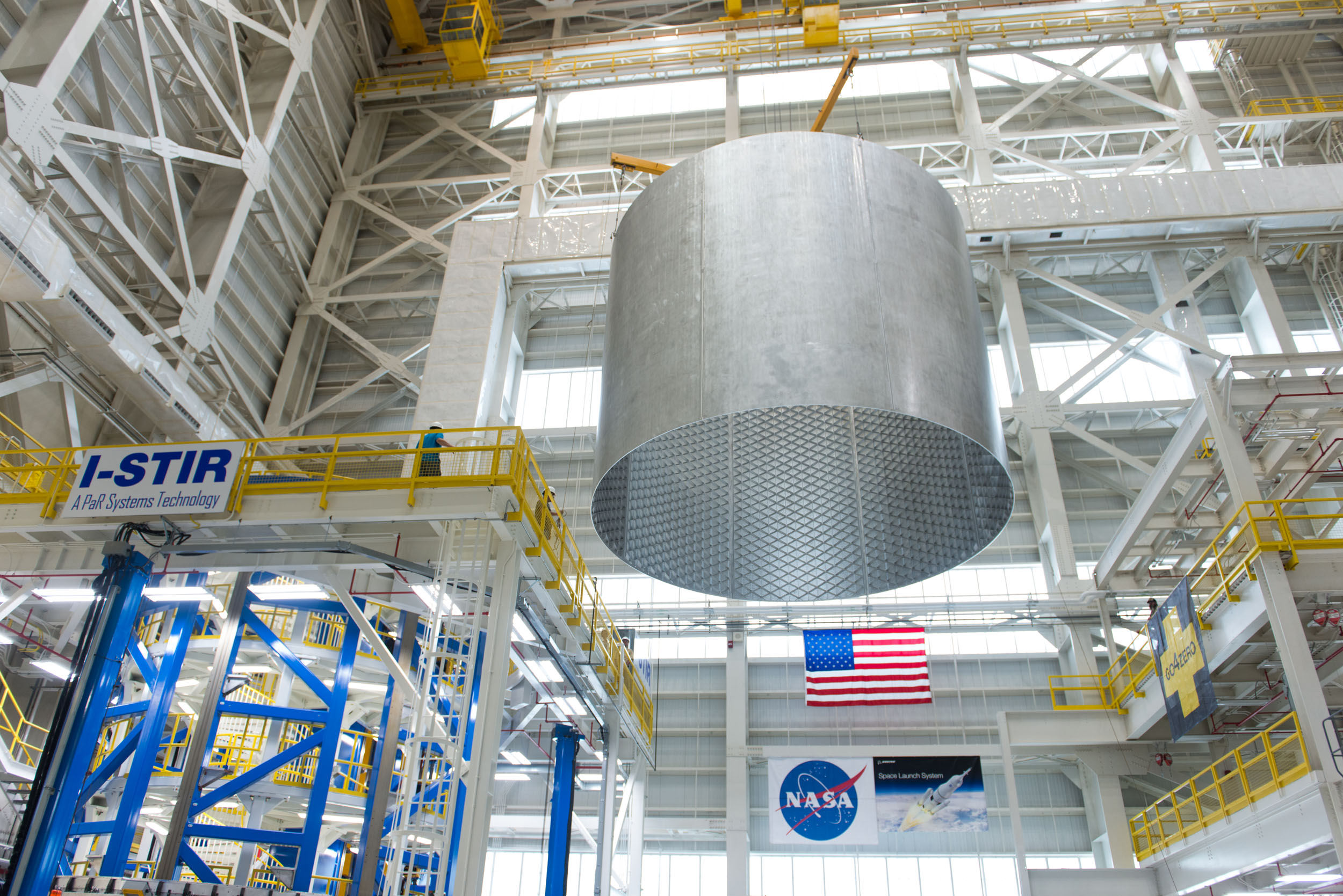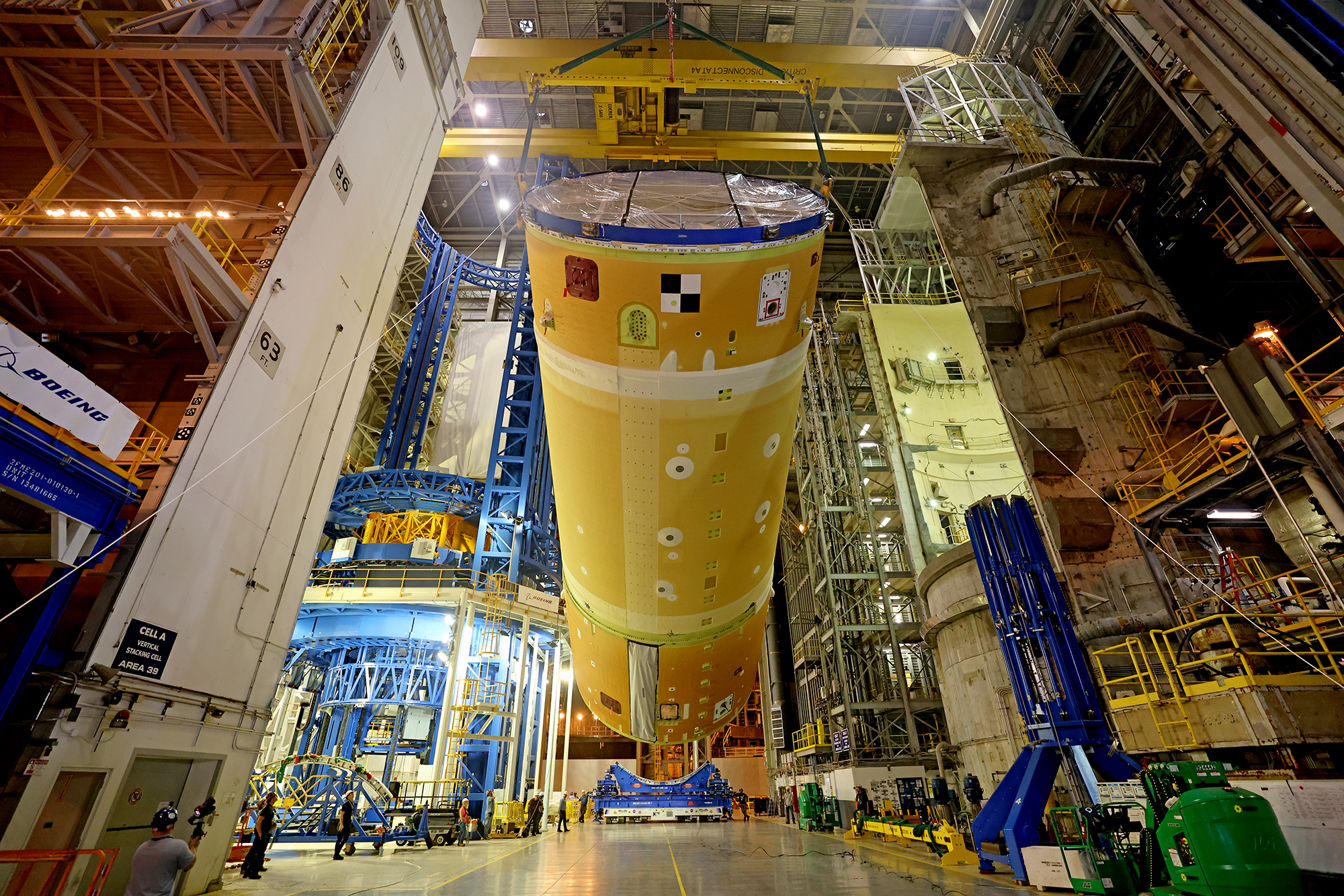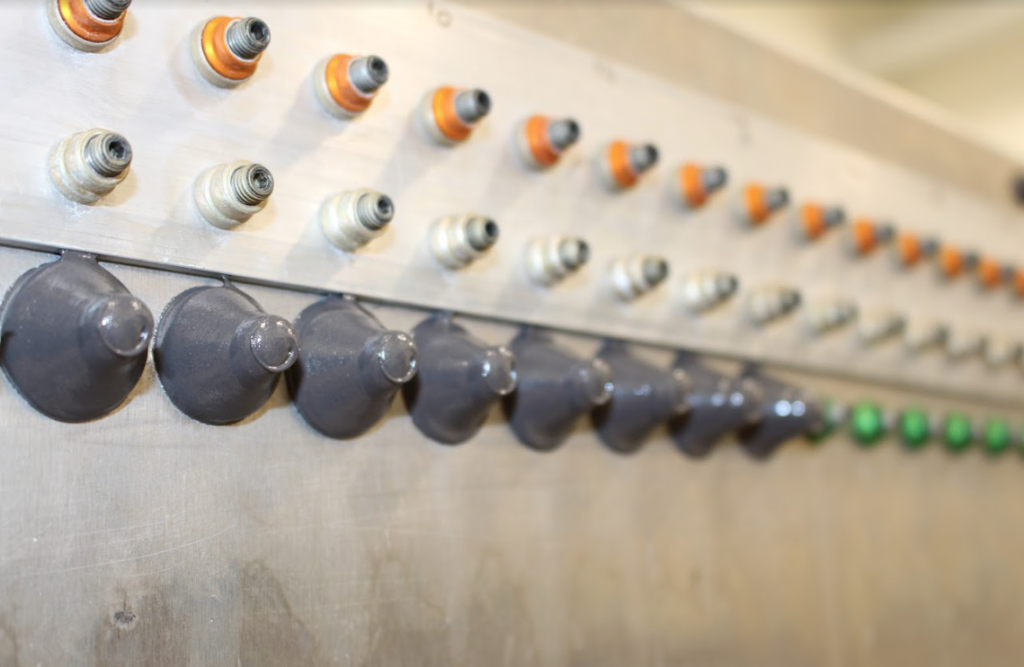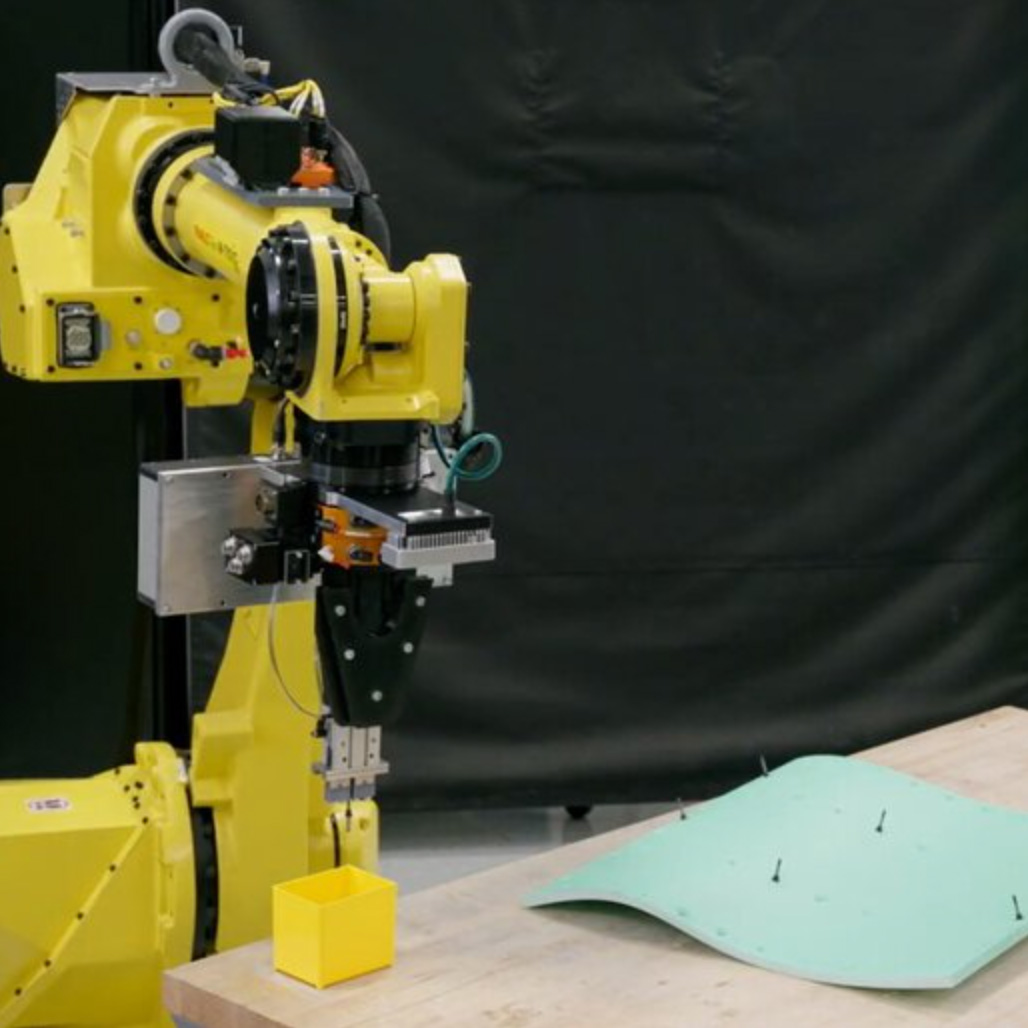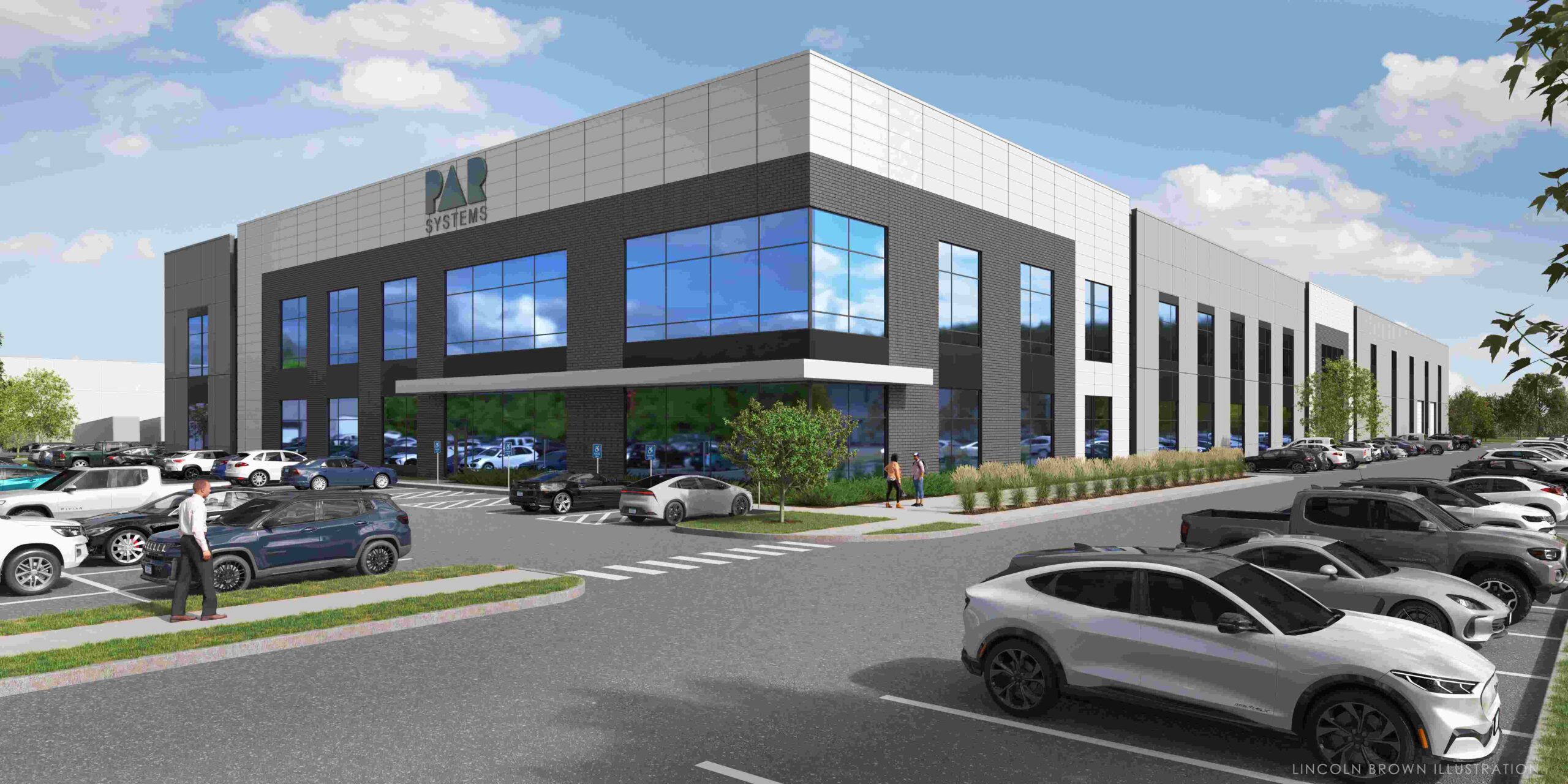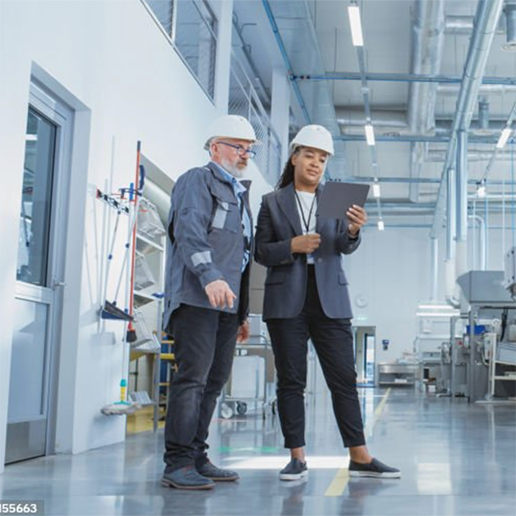NASA’s Artemis and PAR’s Automated Spray Systems for SLS Thermal Protection System
NASA’s Artemis Moon Mission and PAR Systems’ Automated Spray Systems for the SLS Thermal Protection System
December 12, 2022
PAR Systems is proud to support NASA’s Artemis program by designing and building automated spray systems that applied the Thermal Protection System (TPS) on the fuel tanks of its Space Launch System (SLS) rocket vehicle. This critical Thermal Protection System is applied to the outside of the rocket’s core stage fuel and oxidizer tanks and is what gives the rockets their yellow-orange hue. The TPS is critically necessary to insulate these fuel tanks. You ask, why is it necessary to insulate the fuel tanks? The liquid oxygen is cooled to a temperature of ‑297 degrees Fahrenheit and the liquid hydrogen is cooled to a temperature of ‑423 degrees Fahrenheit, that’s seriously cold! These liquids evaporate quickly at ambient pressure and temperature and without insulation, the fuel would boil off before it even launched into space!*
So, what goes into the making of the Space Launch System (SLS) rocket and its Orion spacecraft? NASA’s SLS rocket consists of a multitude of components including its core stage, solid rocket boosters, stage adapter, engine, propulsion stage, the Orion crew module, service module, and various other components and adapters.
PAR’s automated spray systems played an integral role in SLS’s core stage production. The rocket’s fuel tanks are primarily what makes up the core stage. The fuel tanks hold the fuel of course, one containing liquid oxygen and the other containing liquid hydrogen and are what enable NASA’s SLS rocket to be launched into space to carry out the Artemis mission. The core stage is comprised of various components including barrels and domes. Our automated spray systems are used to apply a critical thermal protection system to the outside of these core stage barrels and domes. For context of size, when the core stage tank is in a horizontal assembly position, it is over 27 feet in diameter and 212 feet long! That’s as tall as 7 telephone poles stacked on top of each other!
(Article continued after images below)
The process of automating the application of the Thermal Protection System on NASA’s SLS rocket barrel tanks for Artemis is the world’s largest automated single spray operation. No one has ever automated a single spray event of TPS for an article as big as the liquid hydrogen tank before. Speaking of records, PAR’s automated spray systems resulted in dramatic time and cost savings for NASA. PAR was able to significantly shorten the duration of a process that used to last months down to days!
PAR streamlined a process that was previously sprayed manually because of the domes’ complex geometry, which used to take twelve weeks to complete, down to one week! Not to mention, twelve days of NASA’s original production time that PAR was able to eliminate by automating this process were critical path days, which means that all other operations are dependent on this to proceed in production. Automating the application of TPS on the core stage 2 tanks with PAR Systems saved 12 critical path days of the rocket’s production time, just for the liquid hydrogen tank, which equates to a huge cost savings while gaining more consistency and quality on top of the production time savings!
On top of time and cost savings, there are environmental and safety benefits too. It’s toxic to breath in particles of the TPS foam when it’s being sprayed, so by applying this material via a robot and automated system provides an OSHA safe environment for workers who don’t need to be in the same room during the spraying operations.
Erik Olsen, Advanced Controls Engineer at PAR Systems shares, “I’m incredibly passionate about the work we’ve done for NASA’s Artemis. Just like many little kids dream to be an astronaut when they grow up, especially working in the field of STEM, getting the opportunity to work on something that’s related to the missions NASA is doing has been an incredible experience.”
Thermal Protection System and NASA’s Rockets
The Thermal Protection System (TPS) is a specialized foam that is applied to the outside of the rocket’s core stage fuel tanks. This TPS is critically necessary to maintain the cryogenic propellant at a safe temperature and pressure for fueling, it prevent giant ice sheets from forming on the outside of the rocket, which historically prior to TPS being use, would break away during lift-off and could cause significant damage to the launch vehicle and surrounding area, and thirdly, during launch the TPS provides protection from aerodynamic heating and minimizes the amount of fuel burn-off for launch.
There are actually two different types of foam that are used as insulation to these fuel tanks depending on which part of the fuel tank it is. A different type of foam material is used for the tank barrels and another kind of foam is used for the tank domes. The robot in PAR’s automated spray system that applies the thermal protection system for the fuel tanks is used for both parts of the fuel tanks and both types of foam materials. Even each of the foam insulation materials have different components to them that require mixing during the automated application process. PAR’s automated system precisely meters these components so that the thermal protection material is mixed to the exact ratio.
The foam material that makes up the Thermal Protection System for the SLS core stage needs to be maintained under very strict parameters and held in specific environmental conditions and has very precise thermal, tensile, compressive, and shear requirements. In order to successfully apply the TPS on the rocket tanks, the foam needs to be stored at a certain temperature, it needs to be heated up to a certain temperature before applied, the tank itself needs to be a different specific temperature and the room itself needs to be at a different specific temperature, and all these conditions need to be exact within +/- only five degrees! This process of just stabilizing the environment to create the right conditions in order to perform the TPS application takes three to five days! If any of these temperatures are off, the adhesive characteristics of the TPS foam change and it won’t adhere or stay on the tanks.
Learn more about our automation expertise.
PAR’s Adaptive Manufacturing Technology and NASA’s Thermal Protection System
The extraordinary facet of PAR’s automated spray systems for NASA’s thermal protection system (TPS) is that it utilizes our adaptive manufacturing technology. This means that the system is specially designed to apply the exacting amount of TPS needed for the rocket, within exacting tolerances, by controlling the RPM, temperature, pressure, and stand-off of foam sprayed on rotating domes and barrels, which contributes to maximizing payload capacity of the space vehicle. This means more payload availability that can enable the crew to take more materials aboard the spacecraft to support space exploration, than it would with a less precise application of TPS on the rocket’s fuel tanks.
PAR’s adaptive manufacturing technology comes into play after the thermal protection system has been applied. After the fuel tanks are sprayed with the thermal protection material, some of this material needs to be machined away in certain areas to make way to mount its systems tunnel and other pipes and hardware that hold critical wiring and cabling attached on the outside of the tank. The TPS is also machined away in other areas because the tanks aren’t an exact nominal shape.
The TPS foam that needs to be machined is anywhere from .9 inches to 1.2 inches thick, depending on which part of the tank it is and anywhere from .75 to .9 inches needs to be machined away within 1/8” to ¼” tolerance. With such a highly valuable object at stake and such tight tolerances, the machining operation needs to be critically accurate, or it could cost millions of dollars in re-work or could result in a failed launch. An incredible advancement that improved this process is the specialized system designed by PAR that uses probing technology to locate certain features, can measure through the material with specialized radar to identify precisely where the machining operations need to be made, ensuring machining of the TPS is done with precise accuracy.
What makes this process more challenging and why PAR’s adaptive manufacturing technology is so crucial for this process is because the fuel tanks are typically not a perfect cylindrical object. What does this mean for automation? PAR’s adaptive manufacturing is key in intelligently identifying where foam needs to be removed so that what remains is the exact amount of thermal protection needed across the entire surface area of the fuel tanks. And when it comes to precisely machining away the material, a simple automatic program won’t do the trick. PAR’s adaptive manufacturing technology is able to read and adapt to the complex and unique curvatures and imperfections of the domes and tanks to machine to the exact amount of foam needed. This process would be challenging enough on its own, but adaptive manufacturing applied to an object as massive in size as these rocket fuel tanks, ultra-light weight construction, and a host of other unavoidable manufacturing tolerance stack up the challenges, on top of the fact that the surface of the tank can sag, twist, and warp in ways which the part drawings and prints won’t show. PAR’s adaptive manufacturing technology programming team took a process that could’ve taken 600 different robot programs to achieve to under 10 programs! This means the robot is so much more productive that it could’ve taken 60 times more time and effort to complete the application without PAR’s technology.
Ryan Erickson, software engineer at PAR Systems shares his sentiments about working on the project, “It feels good seeing the SLS rocket get launched into space. It was great that PAR had such heavy involvement building these rockets. We touched so many parts of it, so it makes me proud to have an impact on something so important for the world. Going back to the moon is such an awesome objective, I’m glad we were able to support NASA in so many different facets.”
Learn more about PAR’s Adaptive Manufacturing Technology.
Multi-Functional Systems and Other Technologies
Not only does PAR specialize in designing and building of automated spray systems, used for applications like NASA’s Thermal Protection System, but we’re also experts at engineering multi-functional automation systems that integrate multiple processes in one machine, which can enhance the overall value, production efficiency and bottom-line impact to manufacturers, such as those in the space industry. Some of these systems we’ve provided to support NASA’s Artemis program integrate multiple automation processes, such as the trimming and milling the Thermal Protection material after a robot has applied it to the fuel tanks, cutting and trimming a part to size after it’s been friction stir welded or inspecting the part after it’s been cut or welded.
Learn more about our multi-functional and adaptive manufacturing expertise.
PAR Systems contributed to NASA’s Artemis mission in more ways than just our automated spray systems. We also supplied systems that weld parts of the rocket tanks together using our friction stir welding technology, as well as the crane systems that lift many of the rocket parts in both manufacturing processes and that enable the final rocket assembly!
Read our other articles about the additional areas of expertise and ways PAR contributed to Artemis.
About Artemis
NASA’s SLS rocket for the Artemis mission is the most powerful rocket ever developed in the world with 8.8 million pounds of thrust produced during liftoff! The Artemis mission began with Artemis I, an uncrewed flight test for deep space exploration to validate the Orion spacecraft and SLS rocket for the Artemis II mission which will be a crewed flight, part of the mission to bring astronauts back to landing on the moon.
Artemis I went on a 25-day mission, which launched on November 16th, 2022, that included a test orbit around the moon. NASA is going back to the Moon for scientific discovery and inspiration for a new generation of explorers. The uncrewed Orion spacecraft of Artemis I traveled thousands of miles beyond the Moon, farther than any spacecraft built for humans has ever flown before!
Artemis will land the first woman and first person of color on the Moon. The Artemis mission demonstrates NASA’s commitment and capability to extend human existence to the Moon and beyond and to build a long-term human presence at the Moon for decades to come.
Read more about Artemis and PAR’s contributions to this space program.
*When on the launch pad the LH2 and LOX is continuously boiling off, so this gets refueled while the rocket is on the launch pad until ignition, but the Thermal Protection System on the fuel tanks reduce the amount of fuel that boil-off.
